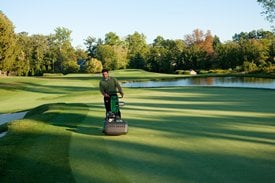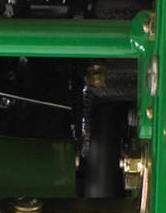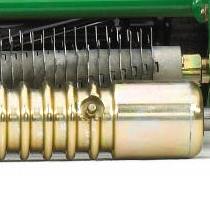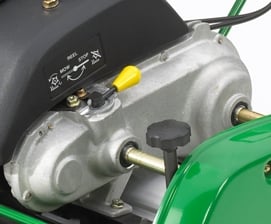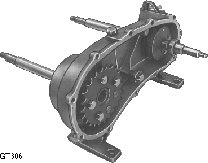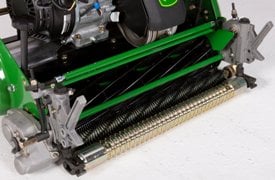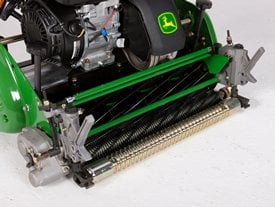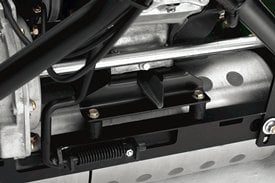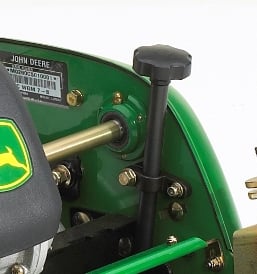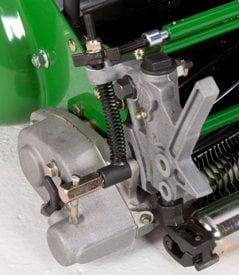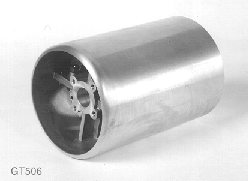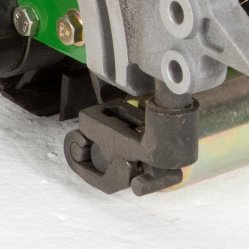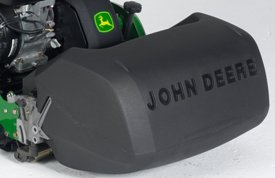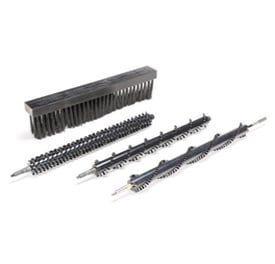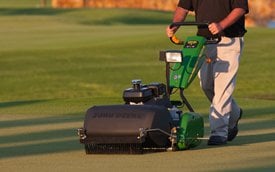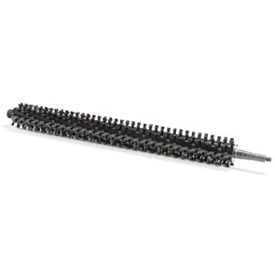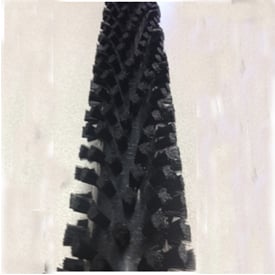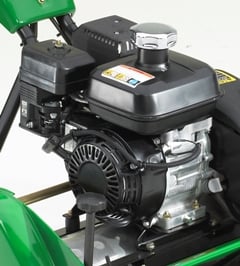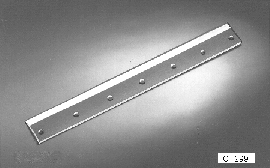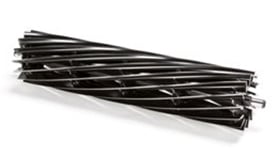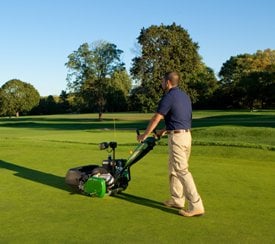 Effective height of cut
Effective height of cut
No matter the type of reel cutting unit or surface being mowed, there are two ways to measure height of cut. The first measure is called benchsetting height of cut. This height of cut is established by using a gauge bar and measuring the distance from the bottom of the rollers to the top edge of the bedknife. This serves as an initial guide for establishing the cutting height.
However, the cutting unit may not be mowing exactly at this height. Other factors come into play, such as softness or firmness of the mowing surface, thatch, turf density, roller shape and surface area, and weight, just to name a few. More than likely, after these factors are taken into consideration, the turf is being mowed at a height less than the benchsetting height of cut. The actual cutting height is called effective height of cut.
How is the effective height of cut measured? It can only be measured with a prism gauge, which uses a series of mirrors to visually show the horizontal profile of the turf. The prism essentially shows the turf rotated upward 90 degrees, so the actual height of cut can easily be seen.
Understanding effective height of cut versus benchsetting height of cut is critical when evaluating a greens mower. Traditional fixed-head walk-behind greens mowers such as the 180SL, 220SL, and 260SL will almost always cut at a lower effective height of cut compared to recent floating-head walk-behind greens mowers.
In order to establish the same effective height of cut, the fixed-head walk-behind greens mower should be set at a higher benchsetting height of cut. Why? All of the weight of the fixed-head walk-behind greens mower is distributed to the rear drum and front roller. The weight on the actual cutting head of a floating-head mower comes from the cutting unit itself, not the traction unit. Essentially, the floating-head walk-behind greens mower is similar to a one-gang triplex in that regard.
So, isn't a floating-head walk-behind greens mower friendlier for the turf? The answer is no. Traditional fixed-head greens mowers stay engaged in the turf, helping to minimize thatch buildup and maintain a consistent height of cut. This may result in less thatch issues over time depending on other agronomic practices. Floating-head walk-behind greens mowers tend to ride over the top of the turf due to the light weight of the cutting unit actually in contact with the turf. This non-aggressive nature may result in significant thatch accumulation over time unless other agronomic practices are implemented.
Both types of mowers are affected by changing conditions. Both will require height-of-cut changes as conditions soften. The difference is that the 180SL, 220SL, and 260SL will always cut at a consistent height of cut due to their weight distribution and balance, whereas floating-head walk-behind greens mowers cannot make the same claim.
For maximum contour-following capability in severe undulations, the John Deere 180SL performs exceptionally. With a narrow 18-in. (45.7 cm) frame, fixed grass catcher, and narrow overlap, the productivity of the 180SL is roughly equal to that of 21-in. (53.34 cm) floating-head walk-behind greens mowers.

